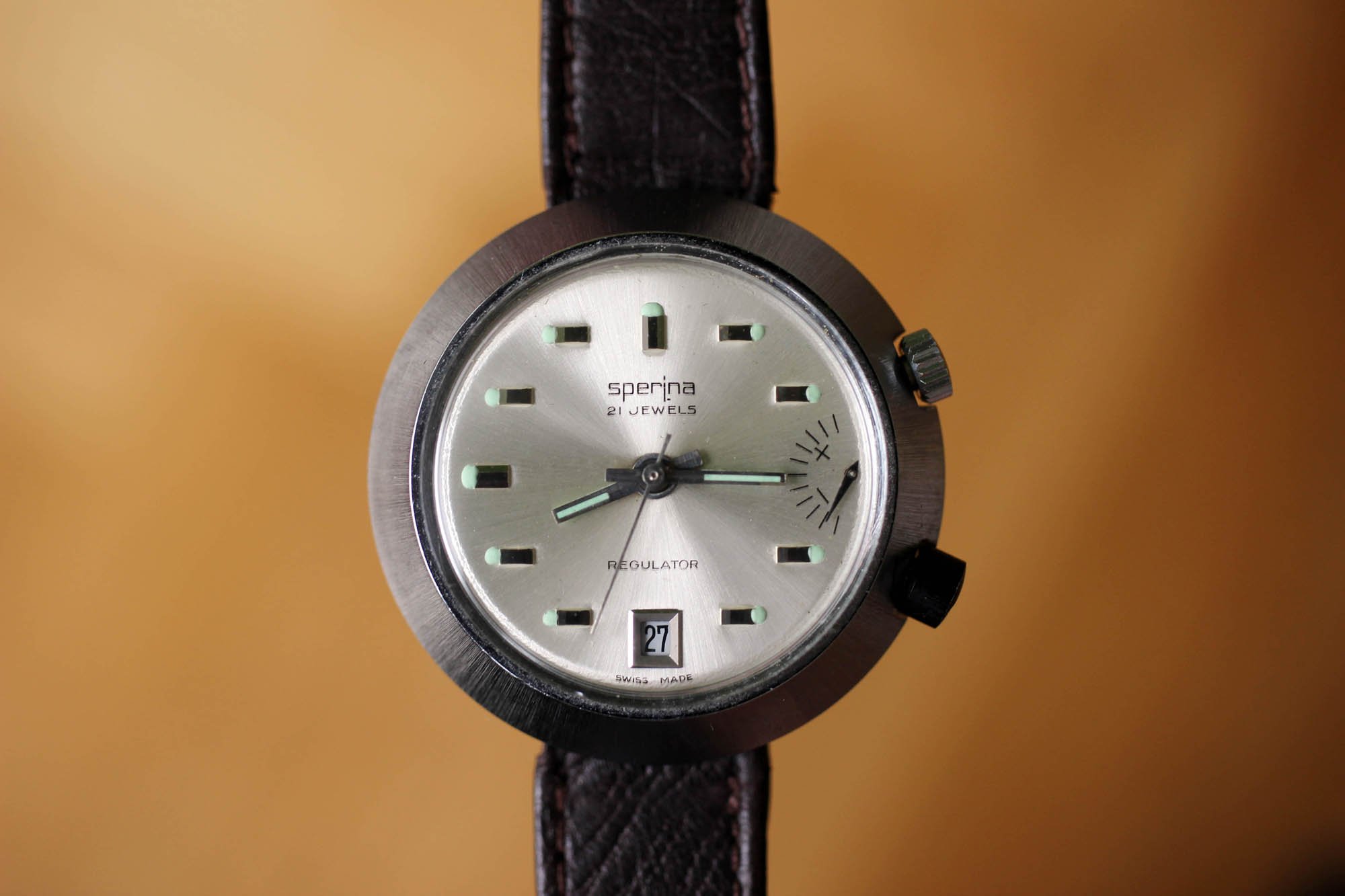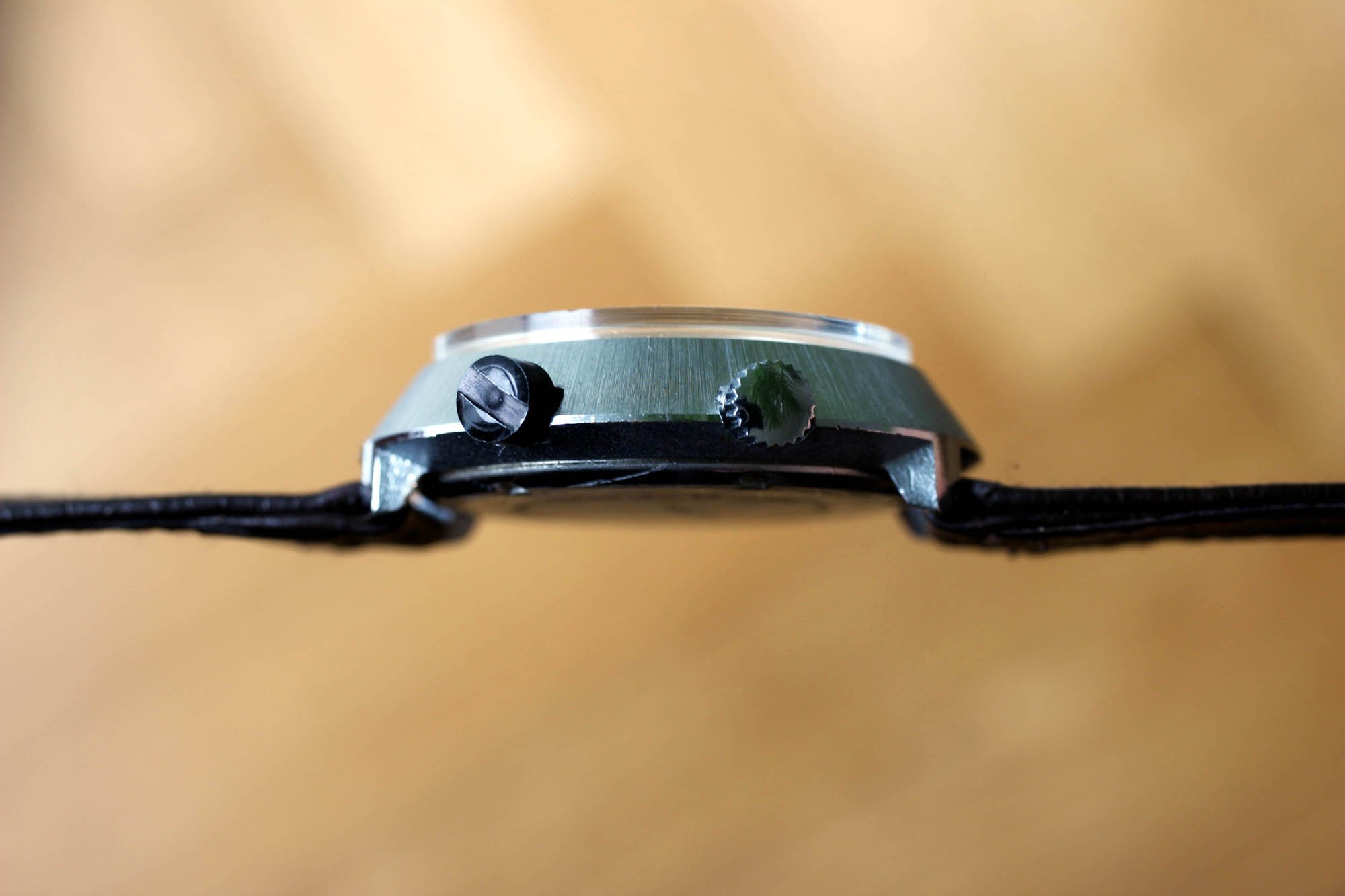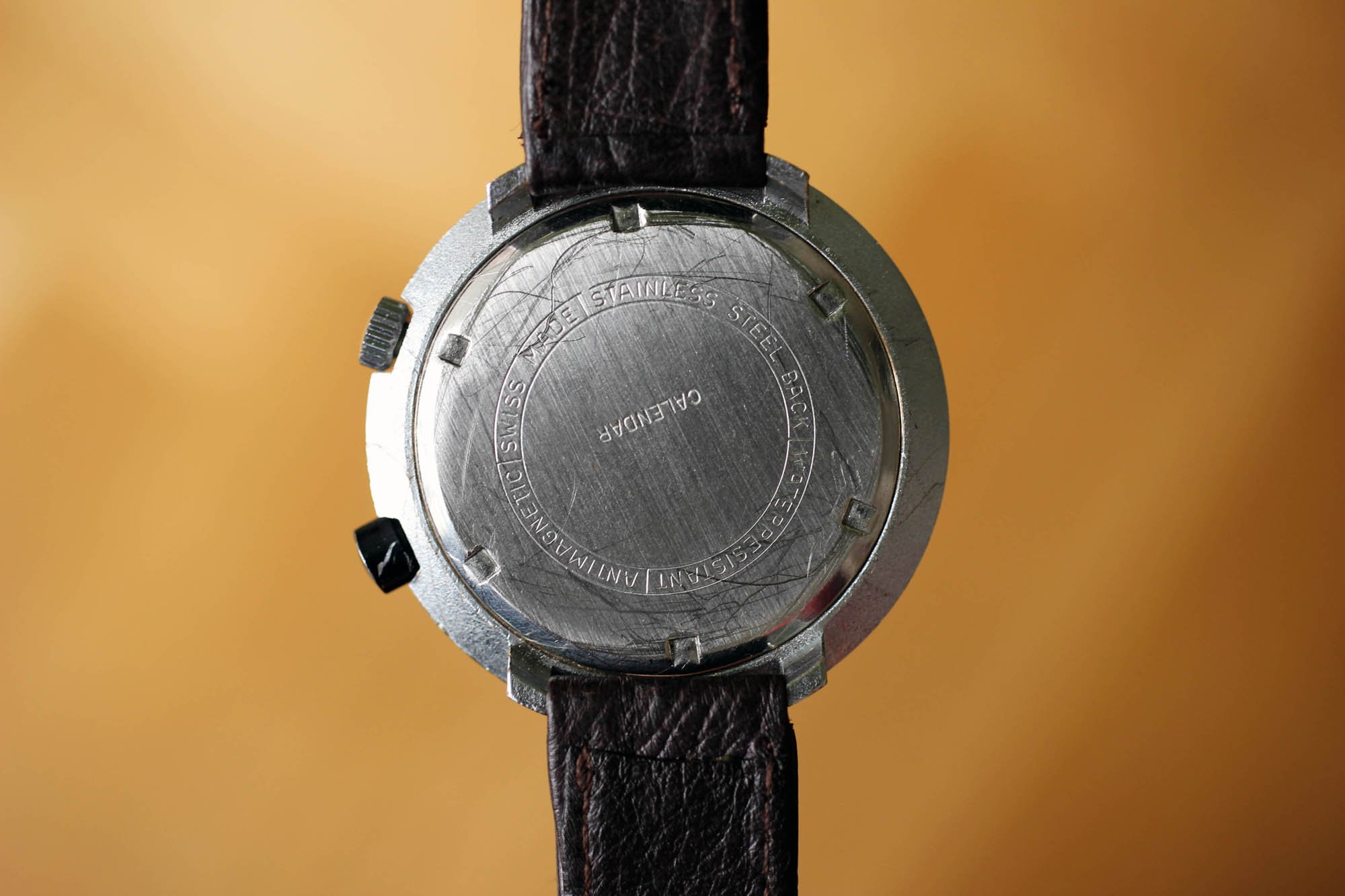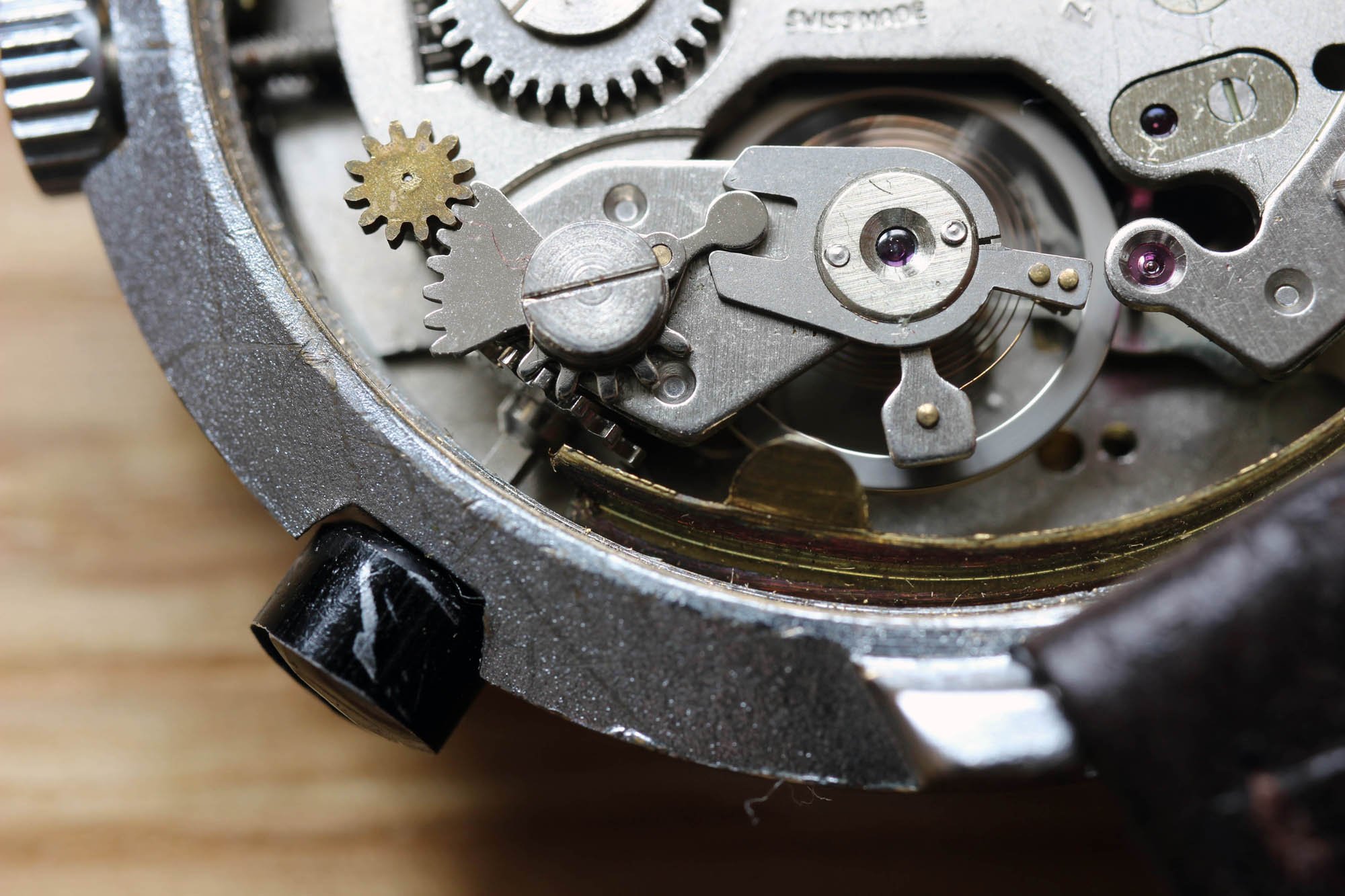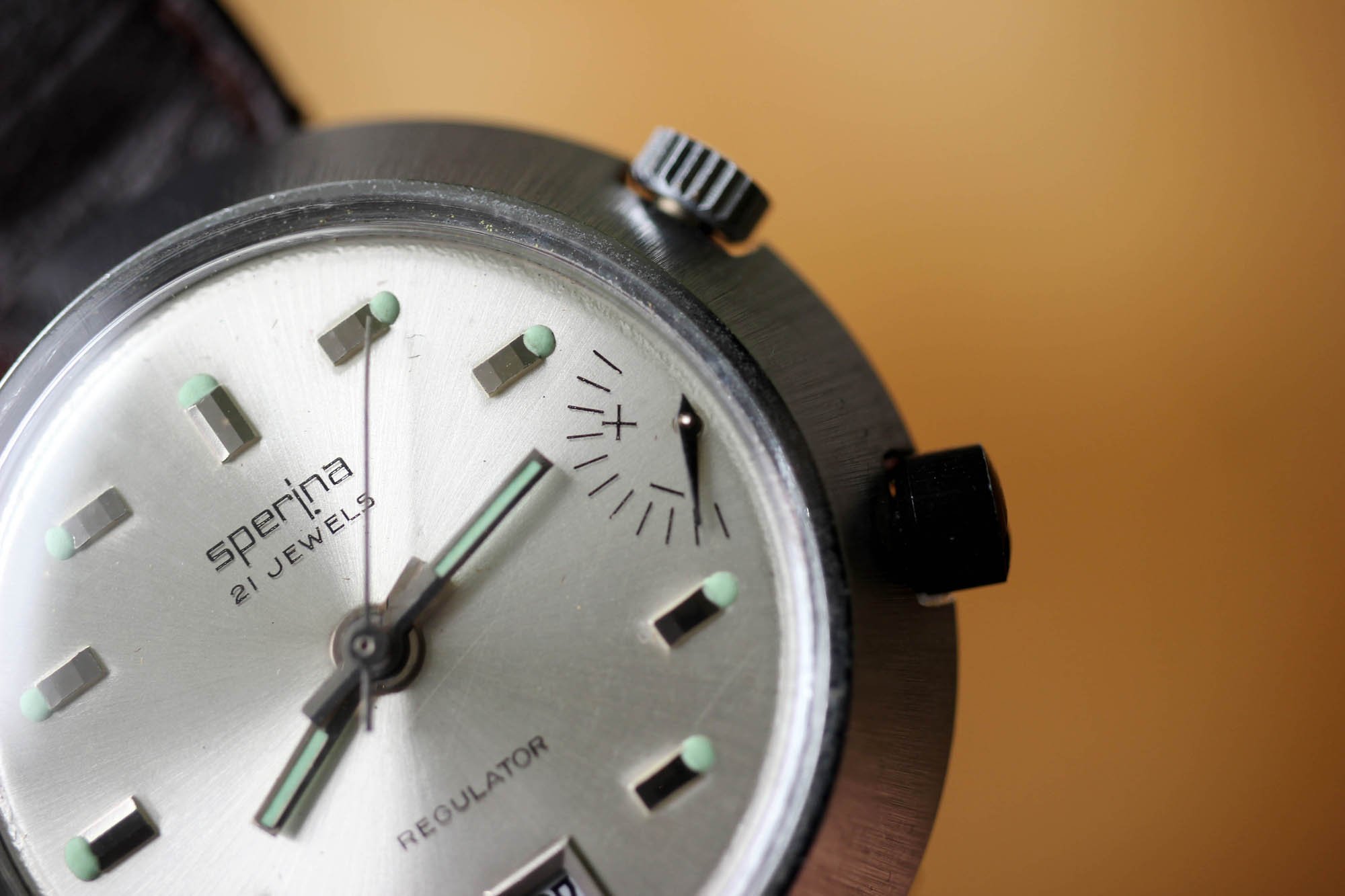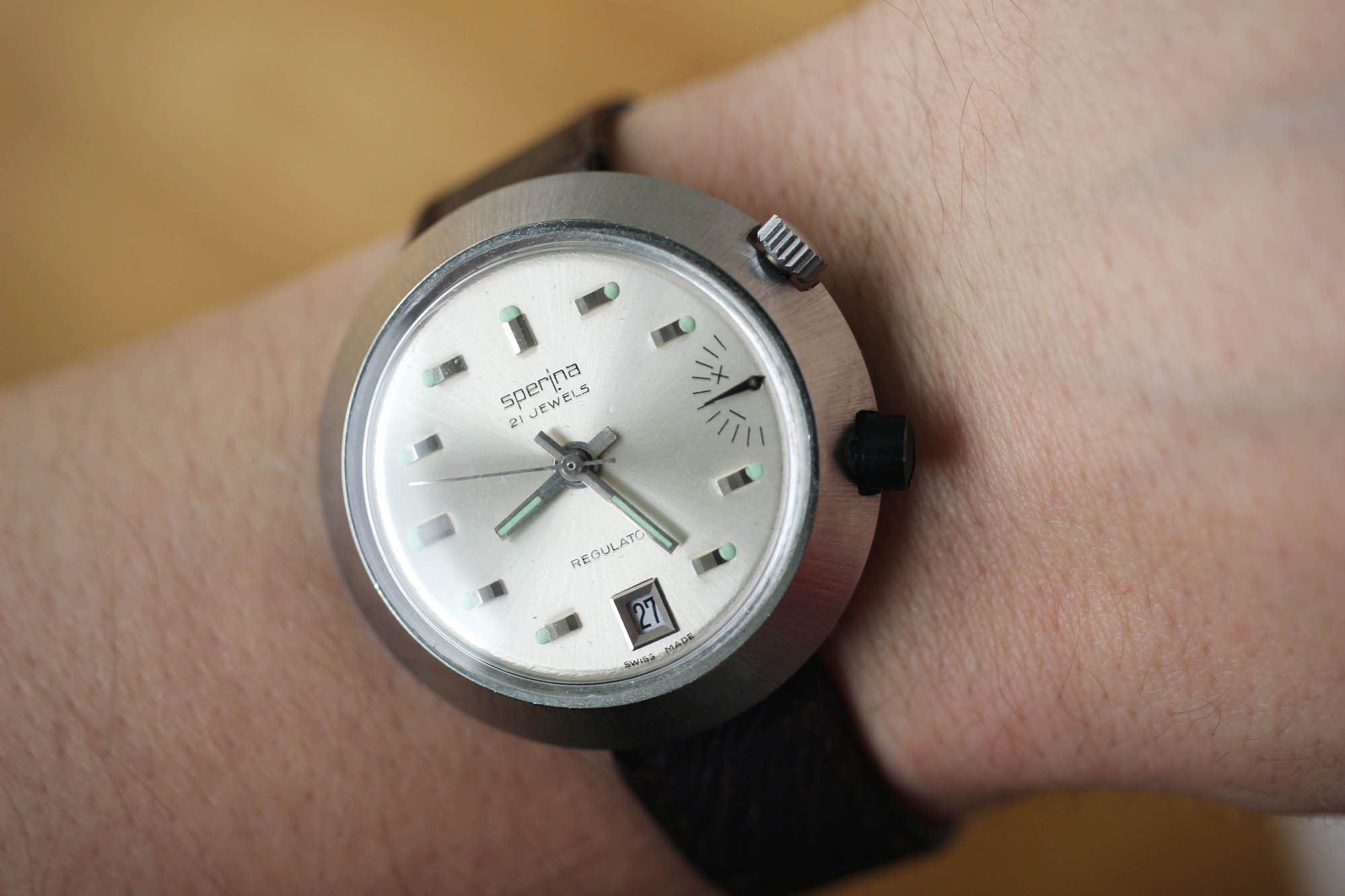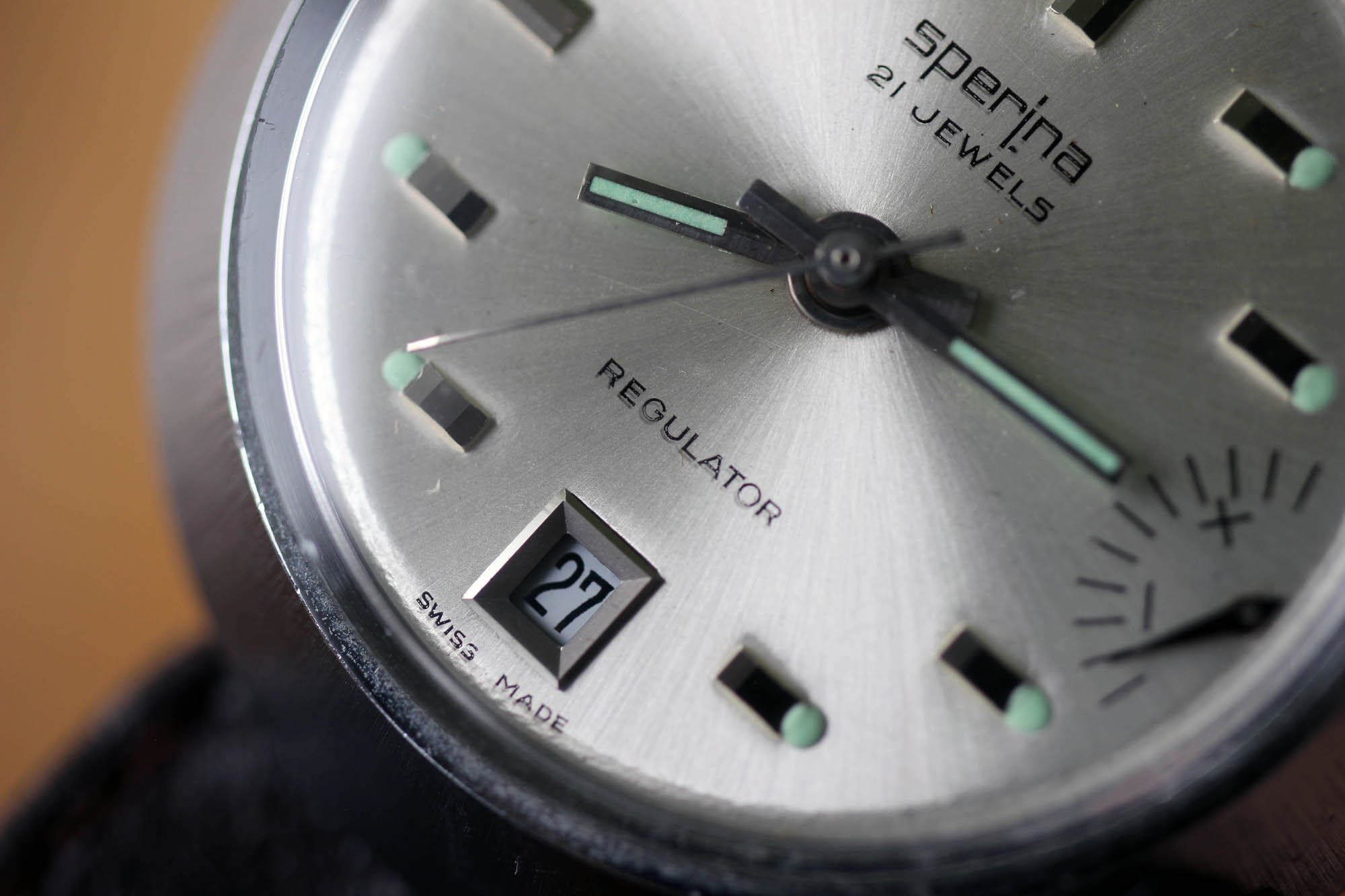#TBT Insane Sperina Regulator
…we’ve got news for you. Meet the Sperina Regulator, a bizarre watch most likely from the 1970s that takes the regulation of the balance wheel out of the watchmaker’s hands and places it firmly in yours.
By now you all know I have a deep love for quirky mechanical timepieces. They are the embodiment of a creative watchmaking spirit that brings to life unbelievable watch complications that many of us never thought possible. To refresh your memory, last year in the #TBT column we featured the dead seconds Tourist Radio-Top with a Chézard movement, that makes a mechanical watch move just like a quartz. We also remember the Gruen Airflight with a mysteriously changing dial every 12 hours or the quirky Mondia Top Second with a flashing red dot second.
Italian knighthood
The Italian guy who sold me the Mondia watch knows what I like. Over the course of a couple months of random messaging, we became WhatsApp friends. Anytime Andrea scores something obscure, he immediately shoots me a message. Selling me such awkward pieces for friendly prices is the highest level of chivalry and selflessness a watch collector can dream of. A big thanks to you, Andrea. Building relationships driven by passion and common joy, not by profit, is an important part of collecting. Andrea could offer his find to the market and wait for the highest offer, but he thinks of me first. He knows how happy it makes me. With Italy going through such difficult weeks, as a mark of solidarity, I decided to feature this special Sperina from Andrea for today’s #TBT.
Shocking Sperina
When I first saw the picture of the Sperina Regulator in our chat with Andrea, I thought I was dreaming. I could not hide my excitement (Andrea must have been quite concerned for my heart). Obviously, I even didn’t have to see the movement to figure out what’s being displayed on the dial there.
It has to be the weirdest, and yet one of the most intuitive read-outs I’ve come across. Located at three, with a small hand attached far behind the minute track, nearly at the very edge of the dial, it would be easy enough to mistake this for a power reserve indicator, but I wasn’t fooled. Eleven lines of the half-circle track are enriched by two simple symbols — a plus and a minus. Now, if you look at the Sperina model name Regulator, you get it too. You can adjust the regulator lever position using one of the “slotted” crown at four o’clock. This way, it is possible to micro-adjust the accuracy of a watch movement. Mind-blowing.
A bit of theory
The balance and the balance spring are the heart of any watch movement. This wheel is the small and fragile flywheel that swings backward and forwards. The balance spring is attached to the balance arbor and also to the balance cock by way of a stud. To cut a long story short, turning the regulator lever mounted on the balance cock from side to side makes the balance spring effectively longer or effectively shorter, meaning the watch runs slower or faster respectively.
ARFS
A balance cock is often engraved with a simple scale and letters ARFS, which stands for ‘Faster Slower’ or the French alternative ‘Avance Retard’. Although the scale often seems nicely graduated, it’s not calibrated and works much more as a visual reference only. So, don’t take it too seriously. We can call it a user-friendly interface that explains, in the simplest way, which way to move the regulator lever to make the watch go faster or slower. Without getting charged by the watchmaker. German speakers might find a “V and N” for Vorrücken and Nachlassen, instead of the “F and S”.
Getting inside a watch
Removing the case back in order to get to the adjustment regulator lever is not a trivial task without proper tooling. A squash ball might work for a screw case back, but not always. If you don’t want to harm the case back or even the lugs with deep scars, I suggest avoiding using screwdrivers or any other brilliant looking replacement. If you want to play with a regulator lever yourself, we do suggest investing in proper tooling. This Chinese alternative will do the job just as well as the higher quality Bergeon I bought for myself.
Sperina Regulator explained
In the Sperina Regulator, the long end of the lever that usually looks like a small dagger is changed for a V-shaped lever, with another thin lever featuring a rounded end entering it. It is operated pretty simply via two simple partial gear “wheels” in the shape of a rooster’s comb. This means they are not turning a full 360 degrees, they just slide from side to side a bit. One of the combs is connected to the massive black pusher at 4 o’clock. For easier, and, I guess, more precise adjustment, the pusher has a notch exactly like the screw heads, so you can rotate it with another instrument if needed. Mine works fine and can be easily adjusted with the fingers.
Dial part
Another rooster comb comes out from the regulation mechanism and rotates another gear wheel connected to an indication hand on the dial moving from plus to minus. The entire mechanism with the levers and indication hand is located as close as possible to the balance wheel, so everything operates within a small space.
Winding it sounds like riding a bicycle with a piece of plastic stuck rattling against the spokes.
We are speaking of a simple and sorry to say, cheaper production, so the compactness of the mechanism makes for a huge benefit positively affecting reliability. I will skip the movement, as it is of no interest to us now. It is just a very basic, unbranded caliber. Winding it sounds like riding a bicycle with a piece of plastic stuck rattling against the spokes. Yes, it sounds sickeningly loud.
Operating the regulator
The regulator is a pure stunner and testing it was an honest joy. When I navigated the indication hand to the middle, the watch went three minutes a day slower. Moving it one position more towards the plus, the watch ran slower by six minutes a day. Moving it to -3 position, watch ran slower by only 40 seconds a day. For three days I felt like Roger Smith — no offense to Roger intended. The possibility of regulating my watch via an extra button gives a guy rotating tens of “standard” watches a pretty charming experience.
Sperina design
If I have ever previously referred to a watch design as a spaceship (like I did here), I apologize. This is the mothership. Look at it from the side and you will see a cone-shaped, sunburst frame with a full glass ceiling standing on four pillars. It’s the archetypal shape you might expect a child to sketch if they were asked to draw an alien spaceship.
The blockish, highly polished hour markers seem to float on the sunburst dial.
The top view doesn’t stray too far away from any ’70s sci-fi movie either. The blockish, highly polished hour markers seem to float on the sunburst dial. And the same is true of the mint green lume dots. They look like something that could power a warp reactor. The sharply cut date window fits in with the rest of the design perfectly.
Shotgun notes
You won’t find two lume dots in the same size. I don’t think they’ve been messed with, but rather I think it’s the quality level of execution. The strange, ghost-printing effect of the dial lettering almost gives me seasickness. On the contrary, there are a few details that deserve recognition, such as the central minute hand that is just long enough that it perfectly passes the longest regulation index by a hair. Lug width is 16mm only, which only adds to the obscure design.
…have you ever even heard of the Sperina watch brand before?
A simple case back is weirdly engraved with the word Calendar. Just speculating, it might suggest there was also another model without a date. Maybe. So far I’ve only seen one other Regulator model with a 17J movement and GMT bezel. And not to forget, have you ever even heard of the Sperina watch brand before?
Last thoughts
The word “rare” polarizes the watch collecting world. Some people use it so often, it becomes devalued. There are, however, still many watches that are deserving of this noble adjective. The only point I want to make is that the term rare or even rarest doesn’t necessarily need to be connected to a stellar priced Rolex, Patek, or AP watch. They are glorified as rare, but there are still hundreds or thousands of them. But will you find another (okay, another five, maybe) Sperina Regulator watches for €250? Good luck with that. Happy hunting.

